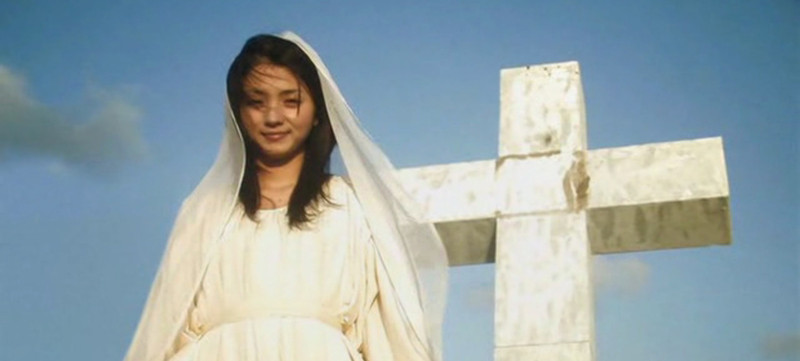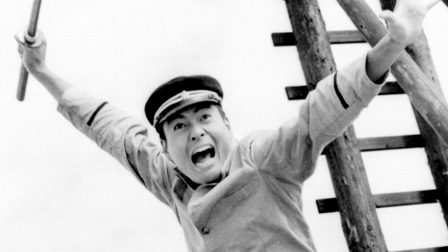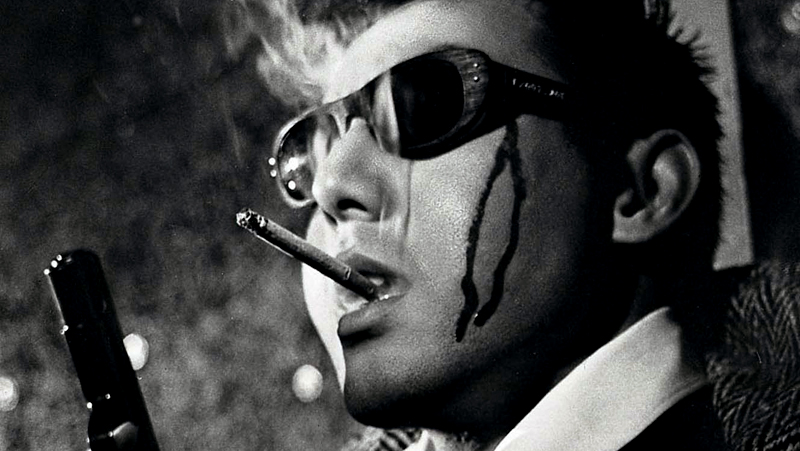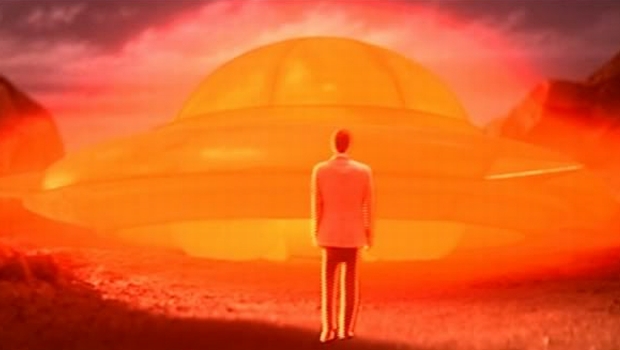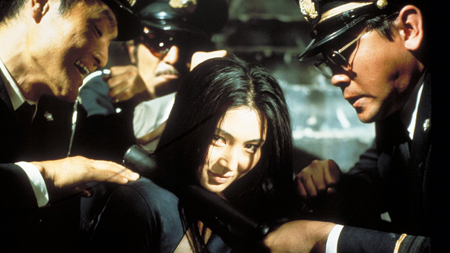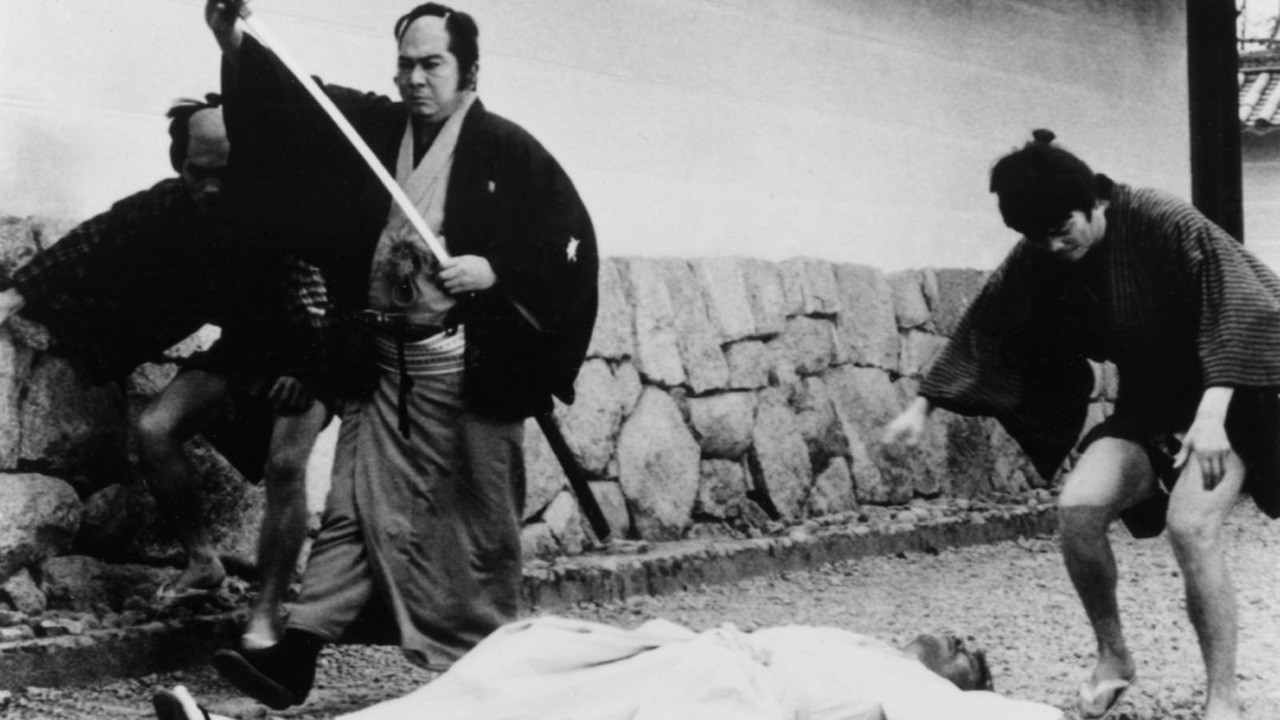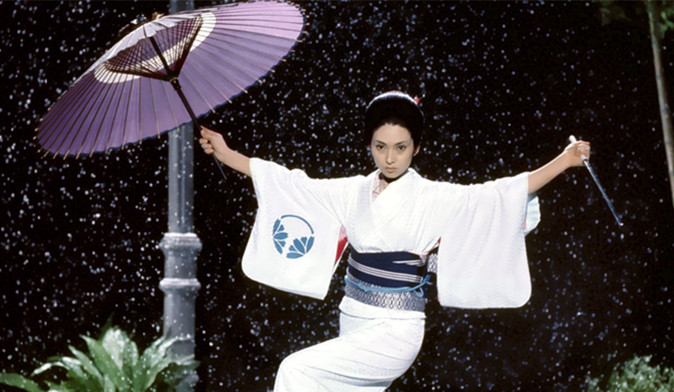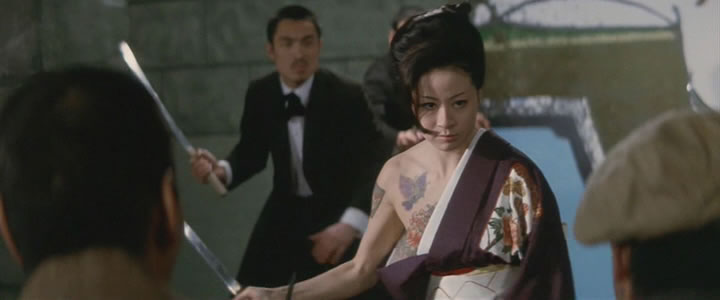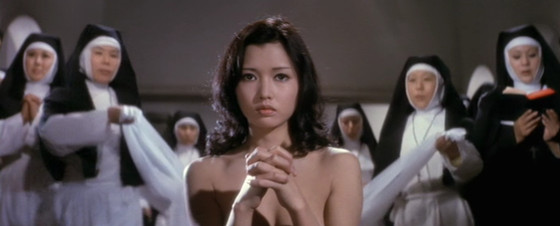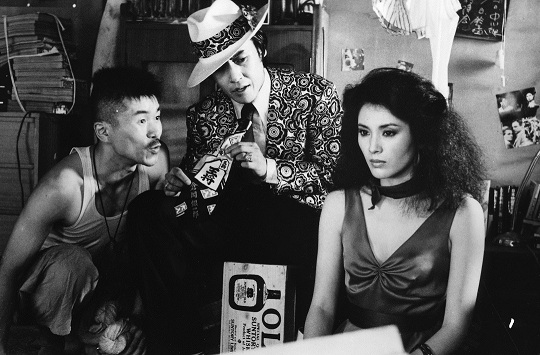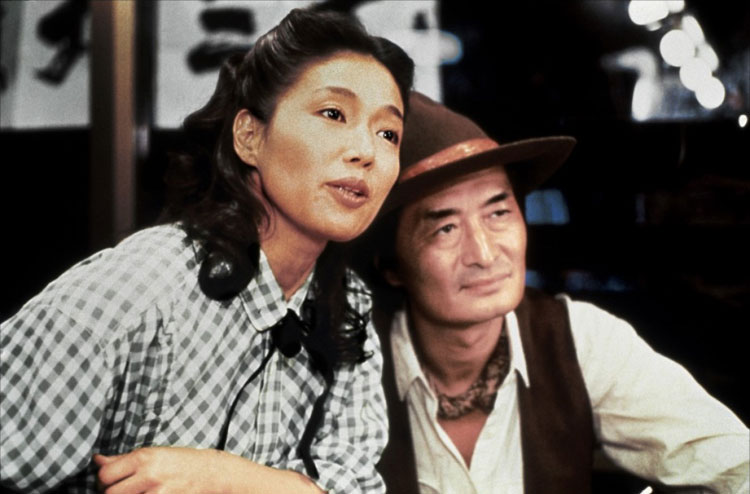The post-WWII Japanese film industry has seen a slew of genres and massive changes throughout the decades from the new wave movement to the vitality of digital filmmaking devices reinventing the economic and cinematic approach therefore the studio systems and financial structure of filmmaking itself. In this time period many styles of “cult” films and genres came about by means of budgetary constraints, changing demographics, availability, and cinematic trends reaching from North America to Eastern Europe all had their effects on Japanese filmmakers and audiences.
From the notorious pink genre and its deviations such as the pinky violence genre, etc to the revenge jidai-geki pieces harkening back to a time when moralistic integrity was vastly different in pre-industrial Japan the films on this list span decades, studio systems, genres, and ideologies to create a broad look at the cinema of Japan that continually pushed the boundaries in both cinema and society.
Whether it be the radical use of inventive cinematography and editing or the appropriation of aesthetic qualities from established styles or the exploitative nature of a societies cruelties under scrutiny, these films and the ever evolving Japanese film industry that at least marginally embraced them influenced generations to come and still hold up in their shock and awe as both an entertaining and revolutionary endeavor.
1. Fighting Elegy by Seijun Suzuki (1966, Nikkatsu)
In the 60’s Seijun Suzuki would make B-billed pictures for Nikkatsu to play after films of larger status by more established directors. In this slew of genre pictures he made up until he was fired from the company in 1967 Fighting Elegy is one of if not his most original and personally invested film. The main character of the film Kiroku, and his trails going through boarding school and gangs, is an allegory to the creation of a fascist and the mindset within Japan during the 1930’s that easily manipulated teenage boys.
With the adaptation of the original source material by Kaneto Shindo to the screen and Seijun’s die hard intent on bring this bombastic story of youth in revolt against himself and the system to life he defied the standards of Nikkatsu and made a daring success. It was only decades later Seijun Suzuki would be realized for his talents.
2. A Colt Is My Passport by Takashi Nomura (1967, Nikkatsu)
Another Nikkatsu B film, this time revolving around a Yakuza gangster story and one of the early leading roles of iconic actor Joe Shishido; Takashi Nomura’s A Colt Is My Passport is a true emulation of the aesthetics of American style noir coupled with Japanese new wave pastiche. Shishido plays a hitman who sets out to kill a rival gangs boss and gets captured in true pulp fashion before escaped and entering war.
The utilization of jump cut editing techniques and allegorical representations of Japan in change mirrored the new waves tropes of Godard and even Japans on Masahiro Shinoda. This coupled with the gritty realism and biting dialogue in the vein of American noirs to capitulate a terse and entertaining story of Yakuza warfare lends the viewer over to a certain amount of finesse in the story telling while establishing the troubles of gang warfare and mentality in a Japan that is rapidly changing.
3. Goke, Body Snatcher From Hell by Hajime Sato (1968, Shochiku)
One of the best and long standing horror films released by Shochiku studios in the late 60’s is Hajime Sato’s comical and biting Goke, Body Snatcher From Hell. After a plane crashes that had a slew of passengers onboard including a hijacker the group begins to be manipulated and torn apart from the inside by a mysterious alien force that enters your brain through a vaginal like slit in between the eyes.
Starring the formidable Hideo Ko as the hijacker and Tomomi Sato as the stewardess the film utilizes special effects and extraterrestrial paranoia as a stepping stone for not only engaging cinema but also a parable on Japans relationship with the west and the state of world affairs during the Cold War. The film, stuck in relative obscurity in the western home video market until recently, has still managed to have widespread influence from Quentin Tarantino to modern Japanese horror.
4. Female Prisoner #701: Scorpion by Shunya Ito (1972, Toei)
The first true exploitation film on the list, Shunya Ito’s Female Prisoner 701: Scorpion is a Women in Prison genre film that plays on the tropes of said style with one large difference, a large part of the film is focused on the female prisoners getting revenge after their subjected torture. This inherently lends to a different interpretation of stances than the British video nasties of the same genre, in where as the purpose of the acts isn’t titillation thinly veiled by allegorical summations of a society changing it’s views and forgetting history.
As with many Japanese exploitation pictures the original source material was a comic and it’s star Meiko Kaji is set up by her boyfriend and raped before being sent to jail. Once in jail the depiction of her and her fellow inmates being subjected to various forms of torture and rape by male prison guards and fellow female inmates is the reason for their attempt at escape.
5. Hanzo the Razor: Sword of Justice by Kenji Misumi (1972, Toho)
Hanzo the Razor is a fictional character that was original the title and central character of a manga series that was developed into a cinematic trilogy starring Shintaro Katsu and released by Toho studio in the mid 70’s. Sword of Justice was the first of the three films and reunited Katsu with director Kenji Misumi who worked together on the Zatoichi the Blind Swordsman film series.
Hanzo Itami is a police officer in Edo period Japan whose unconventional methods of sexual practices and blunt investigative tactics specifically go against the corruption so rampant within not only his local police department but the reigning magistrate that dictates laws and justice within Japan. In Sword of Justice Hanzo is seen as a puritanical character who inflicts torture upon himself and others in the quest for justice and his own vilification of morality in a corrupt and broken society.
6. Lady Snowblood by Toshiya Fujita (1973, Tokyo Eiga/Toho)
Toshiya Fujita’s 1973 cult hit Lady Snowblood is a story of vengeance and femininity based on the manga Shurayukihime and stars Meiko Kaji (who was also the star of Female Prisoner 701: Scorpion). Set in early Meiji era, the story follows Yuki (Lady Snowblood) as she seeks revenge on the criminals who raped her mother and killed her husband and son, eventually putting her mother in jail for killing the man who takes her away to work for him.
Yuki is born in the woman’s prison and told the story of her conception by her mother Sayo, setting her on a cinematic quest for vengeance laced with unique color schemes and aesthetic qualities that lend to a modern rumination on the conditions and idolization of classical Japan. The film has influenced many films and filmmakers both aesthetically and structurally from Yermek Shinbaraev’s Revenge to Quentin Tarantino’s Kill Bill films.
7. Sex and Fury by Norifumi Suzuki (1973, Toei)
Starring the popular pink film actress Reiko Ike, Norifumi Suzuki’s Sex & Fury is a film that transcends any one type of genre to create a complex mash-up of yakuza film, pink film, exploitation story, and violent thriller. Suzuki’s film is another film that deals with a highly sexualized female protagonist who becomes involved in a quest for vengeance and life after witnessing the murder of a man in a gambling den.
Sex & Fury was the start of a very prolific period in Suzuki’s career as he would go on to make the wildly popular Torakku Yaru ten-film series as well as the next film on this list…
8. School of the Holy Beast by Norifumi Suzuki (1974, Toei)
School of the Holy Beast was a staple of the pinky violence films released by Toei in the mid-70’s and one of the most prolific nunsploitation films ever released. With solid acting by the large cast including the leading lady played by Yumi Takigawa and a stunning visual palate that accentuated the violence and moral ambiguity of the film, Norifumi Suzuki’s tale of sadistic nuns and the decrepit power of isolation of young women at the Sacred Heart Convent is camp of the highest order.
As the young woman (Takigawa) discovers the various dark secrets of the convents and its inhabitants she being to realize the severity of the self-sadomasochistic behavior the women delve into as well as her own torture by the nuns. Beast is a scathing indictment of religions moral grasp on Japanese youth and the puritanical veil it throws over society.
9. Fall Guy by Kinji Fukasaku (1982, Shochiku)
One of only two straightforward comedies on this list, Kinji Fukasaku’s Fall Guy also might be the most sublimely absurd film in this lineup as well. Aging film star Ginshiro (Morio Kazama) deals with the tribulations of a changing film industry with his entourage comprised of lackeys. When Ginshiro gets a fan, Konatsu (Keiko Matsuzaka) pregnant he asks his head lackey Yasu (Mitsuru Hirata) to take the fall for him and raise the child since he is worthless and Ginshiro still has a long and fruitful career ahead of him. Yasu agrees and takes up a job as a stunt man to make ends meet.
Fall Guy turns the camera back directly onto the Japanese film and studio systems with scathing satire and hilarious rhetoric. Nothing is safe from its lenses whether it be the star system or popular culture idolizing not only the stars but the film industry that works its employees to the bone.
10. Tampopo by Juzo Itami (1985, Toho)
Juzo Itami’s directorial career started well into middle age as he was a prolific actor throughout his early life, and throughout the small amount of films he directed during the rest of his life, Tampopo is probably his most well rounded comedic endeavor. The story of a truck driver Goro (Tsutomu Yamazaki) and his young sidekick Gun (Ken Watanabe in an early role) who stop at a roadside noodle shop owned by the widowed Tampopo (Nobuko Miyamoto) and end up staying to help the restaurant turns out to be a story deeply entwined in the marriage between food and eroticism.
The comedic representation of individuals connection to food and love is an examination of human nature that helped launch Ken Watanabe to star status and a humorous exploration of one of humans oldest fetishes.
